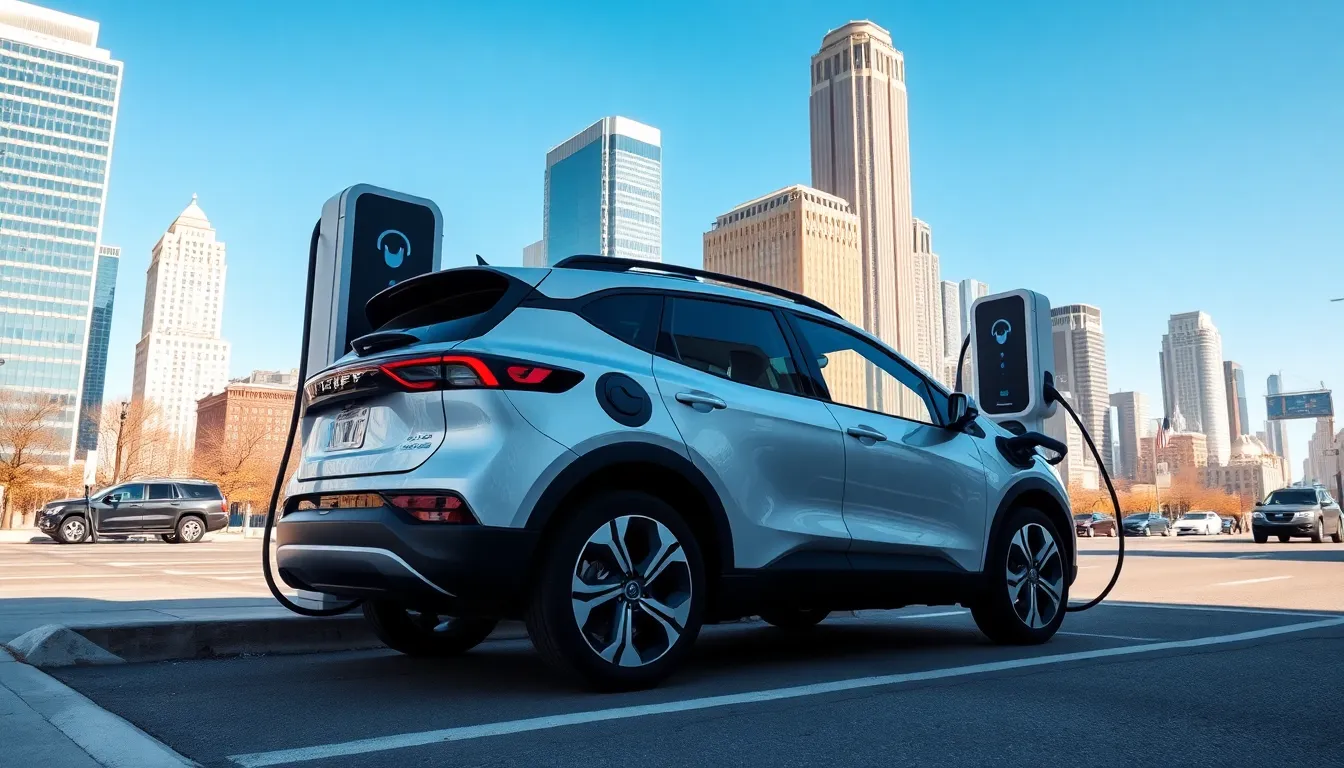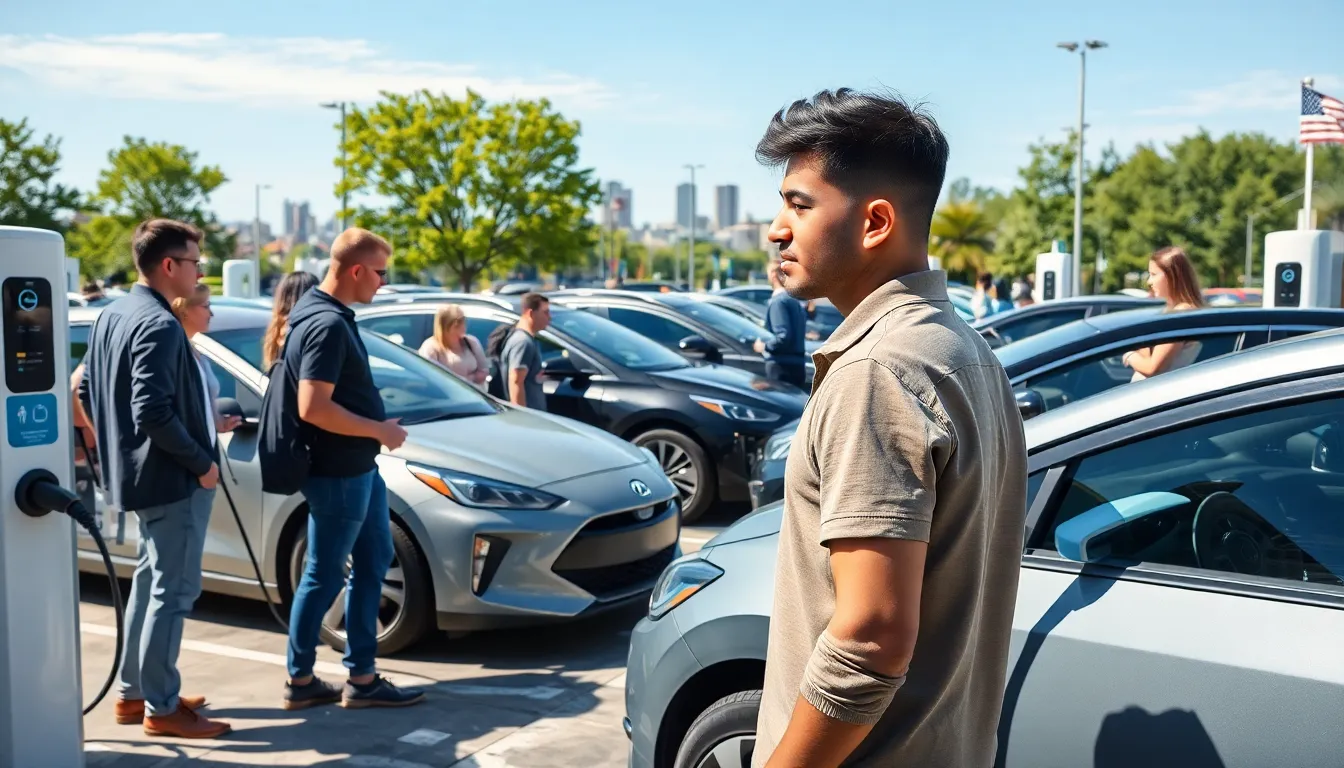The electric vehicle market is rapidly transforming the automotive landscape, driven by technological advancements and growing environmental awareness. With an increasing number of consumers seeking sustainable transportation options, the demand for electric vehicles (EVs) has surged. This shift not only reflects changing consumer preferences but also highlights the need for comprehensive market research to navigate this dynamic industry.
Understanding the electric vehicle market is crucial for manufacturers, investors, and policymakers alike. By analyzing trends, consumer behavior, and regulatory factors, stakeholders can make informed decisions that align with the evolving landscape. As the world moves towards greener alternatives, the insights gained from thorough market research will play a pivotal role in shaping the future of transportation.
Table of Contents
ToggleOverview of Electric Vehicle Market Research
Electric vehicle (EV) market research focuses on understanding trends, consumer preferences, competitive analysis, and regulatory impacts. This research supports manufacturers and investors in making strategic decisions.
Market research identifies key trends within the EV sector, such as increased adoption rates, advancements in battery technology, and expanding charging infrastructure. For instance, global EV sales reached 10.5 million units in 2022, representing a 55% increase compared to 2021.
Consumer behavior analysis reveals significant factors influencing purchase decisions. Price, range, charging convenience, and brand reputation play essential roles in shaping consumer choices. Surveys indicate that 67% of potential EV buyers prioritize vehicle range when considering a purchase.
Regulatory analysis assesses government policies driving EV adoption. Incentives, such as tax credits and subsidies, foster market growth. In 2023, the U.S. introduced an expanded tax credit, influencing consumer purchases and boosting overall market interest.
Finally, competitive analysis highlights the positions of key players within the market. Major automakers, alongside new entrants, continuously innovate to meet rising consumer expectations. Leading companies like Tesla, Volkswagen, and Ford dominate the market, while numerous startups emerge, introducing diverse models and pricing strategies.
Thorough market research equips stakeholders with insights that promote sustainable growth and prepare them for future challenges in the electric vehicle landscape.
Key Trends in Electric Vehicle Market

Growing adoption rates and technological innovations significantly shape the electric vehicle (EV) market. These trends illustrate the accelerating shift towards sustainable transportation.
Adoption Rates
Adoption rates for electric vehicles continue to surge globally. In 2022, EV sales reached 10.5 million units, marking a 55% increase compared to 2021. Various factors contribute to this upward trend, including heightened environmental awareness and expanded consumer accessibility. Regions like Europe and China lead in adoption; for instance, Europe accounted for 25% of all new car sales in 2022 being electric. The U.S. also showed growth, with approximately 6% of new car sales classified as EVs. A recent study indicates that 67% of potential buyers prioritize vehicle range, further driving interest in manufacturers that offer substantial mileage.
Technology Innovations
Technology innovations play a crucial role in enhancing the electric vehicle market. Battery technology advancements have significantly improved efficiency and reduced costs. Companies report breakthroughs such as solid-state batteries that promise longer lifespans and faster charging times, which are expected to dominate the market by 2025. Furthermore, software developments are transforming EVs into smart vehicles equipped with features like autonomous driving and advanced connectivity. Enhanced charging infrastructure, including fast-charging networks, is expanding, facilitating convenient charging solutions. By 2023, nearly 60,000 public charging stations have been established across the U.S., encouraging further adoption of electric vehicles.
Market Dynamics
The electric vehicle (EV) market experiences dynamic shifts influenced by consumer preferences and regulatory frameworks. Understanding these elements helps stakeholders adapt strategies and seize opportunities.
Consumer Preferences
Consumer preferences play a crucial role in shaping the EV market landscape. Key factors influencing purchase decisions include:
- Price Sensitivity: Consumers often prioritize affordability, with many respondents indicating cost as a primary concern.
- Vehicle Range: Range anxiety remains significant; 67% of potential buyers prioritize the distance an EV can travel on a single charge.
- Charging Convenience: Easy access to charging stations impacts buying choices, as consumers seek solutions that fit their daily routines.
- Brand Reputation: Established brands, along with new entrants, must build trust among consumers, as reputation influences perception and purchasing intent.
Market research indicates that aligning products with these preferences can enhance appeal and drive sales.
Regulatory Impact
Regulatory factors greatly affect EV market dynamics. Government initiatives and policies focus on promoting sustainable transportation. Influential aspects include:
- Tax Credits and Subsidies: Incentives, such as the expanded tax credit introduced in the U.S. in 2023, significantly lower the effective cost of EVs for consumers.
- Emissions Standards: Stricter emissions regulations compel manufacturers to innovate and develop cleaner technologies to comply with government mandates.
- Infrastructure Investments: Government funding for charging infrastructure, aimed at expanding access, directly contributes to market growth and consumer confidence.
Understanding regulatory frameworks becomes essential for stakeholders targeting compliance and capitalizing on benefits designed to accelerate EV adoption.
Competitive Landscape
The competitive landscape of the electric vehicle (EV) market features established corporations and promising startups, each adapting to dynamic industry trends. Key players work to leverage technological advancements and consumer demands while navigating ongoing regulatory changes.
Major Players
Major players, including Tesla, Volkswagen, and Ford, dominate the EV market.
- Tesla leads in EV sales and innovation, showcasing advancements in battery efficiency and autonomous driving technologies.
- Volkswagen focuses on strategic investments in EV production, aiming for 1.5 million electric vehicles by 2025, following substantial investment in their ID. series.
- Ford has committed $50 billion towards electrification by 2026, emphasizing their electric F-150 and Mustang models as market leaders.
These companies continually enhance consumer engagement through branding and product diversification, positioning themselves competitively within the market.
Emerging Startups
Emerging startups significantly impact the EV landscape by introducing innovative technologies and niche offerings.
- Rivian focuses on electric trucks and SUVs, attracting attention with its R1T model, aiming for production scalability and consumer-centric features.
- Lucid Motors emphasizes luxury electric sedans, highlighted by its Lucid Air model, which promises an extensive range and high performance.
- NIO and Xpeng, both from China, innovate in battery-swapping technology and autonomous driving, catering to evolving consumer preferences.
These startups challenge traditional manufacturers by targeting underserved segments, fostering competition, and driving industry growth.
Future Projections
The electric vehicle market is poised for significant growth, with projections indicating a strong upward trajectory influenced by technological advancements and consumer demand. Insights from various market research reports detail anticipated developments that stakeholders must consider.
Market Growth Forecasts
Market forecasts predict that global EV sales could reach 28 million units by 2030, representing an annual growth rate of approximately 20%. The transition to electric vehicles is driven by factors including falling battery costs, increased range, and expanding charging networks. Specifically, by 2025, solid-state battery technology is expected to account for over 30% of the battery market, further boosting EV performance and affordability. Furthermore, governments worldwide are intensifying efforts to support this shift; policies like the European Union’s Green Deal aim for at least 30 million electric vehicles on the road by 2030, underscoring regulatory commitments to a sustainable future.
Challenges Ahead
Despite positive growth forecasts, the EV market faces several challenges. Supply chain disruptions, particularly for battery materials such as lithium and cobalt, could hinder production capacity. Current geopolitical tensions may exacerbate these supply chain issues, as more than 70% of lithium comes from just a few countries. Additionally, infrastructure limitations persist, with only 60,000 public charging stations available in the U.S. as of 2023. Overcoming these infrastructure hurdles requires substantial investment and coordination among government entities and private companies. Moreover, fluctuating consumer perceptions regarding vehicle performance and environmental impact can also impede adoption rates; ongoing educational initiatives about the benefits of EVs remain crucial to addressing these concerns.
The electric vehicle market is on a transformative path that’s reshaping the future of transportation. With increasing adoption rates and technological innovations driving change, stakeholders must stay informed to navigate this evolving landscape. Understanding consumer preferences and regulatory impacts is essential for making strategic decisions.
As the market continues to expand, collaboration among manufacturers, investors, and policymakers will be vital. By leveraging comprehensive market research, stakeholders can better position themselves to meet the growing demand for sustainable transportation solutions. The journey toward a greener automotive future is just beginning, and those who adapt will thrive in this dynamic environment.



